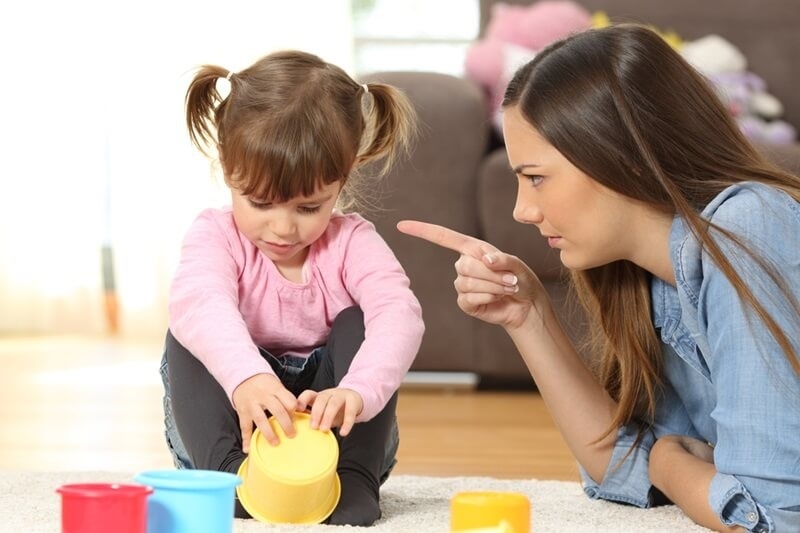
Let’s face it—no one walks into parenthood thinking, “I can’t wait for my kid to scream on the grocery store floor while strangers watch.” But here you are, wondering what just happened and how to stop it from happening again. Welcome to the chaotic, confusing, and weirdly educational world of toddler tantrums.
If your little one has ever thrown themselves on the ground like their life was ending because their banana broke in half, just know—you’re not alone. Tantrums are a universal toddler language. They don't care how patient you are, how gentle you speak, or how many parenting books you've read. They show up, loud and messy, in public places and quiet living rooms alike.
But tantrums don’t have to turn your day upside down. With the right strategies (and a decent sense of humor), you can handle them in a way that supports your toddler’s growth and protects your sanity.
Let’s break down ten smart, real-world ways to deal with toddler tantrums. Not just expert-speak. We’re talking practical, tested, in-the-trenches kind of advice that might actually help you stay calm while your kid loses it over… the color of their sippy cup.
Here’s the golden rule: your calm is their anchor. When your toddler is spiraling, what they need most is for you not to spiral too. Sure, it’s tempting to shout over the screaming or try to reason mid-meltdown. But honestly? That just adds fuel to the fire.
Try this instead: lower your voice. Soften your tone. Even whisper. It can feel unnatural at first (especially if you're about to lose it yourself), but the contrast often catches their attention. And if nothing else, it keeps you regulated.
Because toddlers are little mirrors. If you bring chaos, they reflect it back. If you bring calm? Eventually, they learn to reflect that too.

Yes, crying over a triangle-shaped sandwich instead of a square one seems absurd to us. But to your toddler? It’s a full-on emotional crisis.
You don’t have to agree with their logic. You just have to show that you get how upset they feel. A simple, “You’re really mad that your toy won’t work. That’s so frustrating,” goes a long way. It doesn’t mean you’re giving in. It means you're connecting.
When toddlers feel heard, their walls come down faster. And you avoid the power struggle. Win-win.
Toddlers crave control. Tantrums often happen when they feel powerless or backed into a corner. That’s where the magic of “choice framing” comes in.
Instead of saying, “Put your shoes on now,” try, “Do you want to wear your blue shoes or your red ones?” You’re still steering the outcome—but they feel in charge. It’s a tiny shift that often prevents a full-on showdown.
It doesn’t work every time. But it’s way more effective than barking orders and hoping for obedience.
You know how toddlers forget they’re mad the second they see a butterfly or a truck? Use that. Distraction isn’t about manipulating them—it’s about meeting them where their attention span actually lives.
A funny face, a silly dance, or a sudden “Whoa, look what’s outside!” can derail a tantrum mid-build. Especially if you catch it early. The trick is to act fast, and commit. Be weird. Be dramatic. It’s okay if you feel ridiculous. Your toddler’s laughter will be worth it.
Literally. Eye contact changes everything.
When your toddler is losing it, crouch down to their height. Look them in the eyes. Speak gently. This not only makes them feel safer, but also reduces the “you vs me” dynamic. It’s no longer the Big Person telling them what to do—it’s someone who cares, trying to understand.
Even if they’re too upset to respond right away, this gesture builds trust. And over time, it helps them feel less threatened in emotionally intense moments.
One of the hardest things about how to handle toddler tantrums is knowing where to draw the line. Should you give in to stop the screaming? Or stand firm and risk a longer meltdown?
Here’s the deal: you can say no with love. Boundaries aren’t mean—they’re safety. It’s not about punishing or guilting your child. It’s about calmly holding a limit, even when they protest.
Try saying, “I hear you. You really wanted to play more. But it’s bedtime now. I know that’s hard.”
The tantrum might still happen. But now it’s not about fighting with you. It’s about them learning to handle disappointment—while feeling loved.
Sometimes, the tantrum isn’t really about what it seems. A fight over the blue cup might actually be about being overtired. Or overstimulated. Or hungry. Or needing a break from a busy day.
Start noticing patterns. Do the meltdowns always happen around 5 p.m.? After daycare? When you skip snack time?
You might start to spot patterns that help you prevent tantrums before they erupt. That’s not to say every tantrum is avoidable (spoiler: they’re not). But awareness helps. A lot.
Worth a Look: Top Strategies to Prevent Toddler Eating Problems in 2025
Toddlers throw tantrums because they feel big emotions—and don’t have the words to explain them. That’s where you come in.
Use these moments to name their feelings: “You’re sad because we had to leave the park.” Or, “You’re mad that I turned off the TV.”
Over time, this gives them language to express themselves instead of screaming. And eventually, they’ll say, “I’m mad!” instead of launching a toy across the room. Progress.
You know the moment when your jaw is clenched, your blood pressure’s rising, and you’re counting the seconds till bedtime? That’s when you need a breath. Maybe five.
Inhale. Exhale. Even if your toddler is mid-shriek, taking a moment to ground yourself helps you respond instead of react.
Modeling calm breathing—even just one slow breath—also gives your child a visual of what emotional regulation looks like. They might not copy it now. But someday, they will.
Here’s a mistake most of us make: trying to teach a lesson during a tantrum. Spoiler alert—it doesn’t work. Their brain is in fight-or-flight. They literally can’t process your wise monologue about good behavior.
Wait till later. When they’re calm, cuddle up and talk about what happened. “You were really upset earlier. Next time, let’s use our words when we feel mad.”
These little follow-ups add up. Over time, your toddler will begin to connect the dots.
Tantrums are a normal part of development. But some parents wonder: “Are my toddler’s tantrums too much? Too frequent? Too intense?”
Here’s a general guide for toddler tantrums when to worry:
Of course, every child is different. Trust your gut. If something feels off, talk to a pediatrician or child therapist. There’s no shame in asking for help.
Ah yes, the million-dollar question: when do toddler tantrums stop?
Short answer? They taper off as language and self-regulation skills improve—usually around ages 4 to 5. But every child is different. Some mellow out sooner. Others have big feelings a bit longer.
That said, consistent support and structure can absolutely shorten the tantrum phase. Not eliminate it, but make it easier to ride out.
Hang in there. You're teaching your toddler how to be human. And that’s no small thing.
As Previously Covered: Understanding Rainbow Babies on National Rainbow Baby Day
We don’t talk enough about how hard this stage is. Toddler tantrums are exhausting. Loud. Emotional. Embarrassing, sometimes. You might feel like you’re doing it all wrong.
But if you're reading this? You're probably doing it right.
You care. You’re trying. You’re learning how to deal with toddler tantrums without yelling, giving up, or becoming a robot. That matters more than you think.
And on the days when you totally lose it (because yeah, that’s gonna happen too)? Apologize. Hug it out. Start fresh. Kids don’t need perfect parents. They need real ones who love them through the chaos.
You’ve got this. Even when the banana breaks in half again.
This content was created by AI